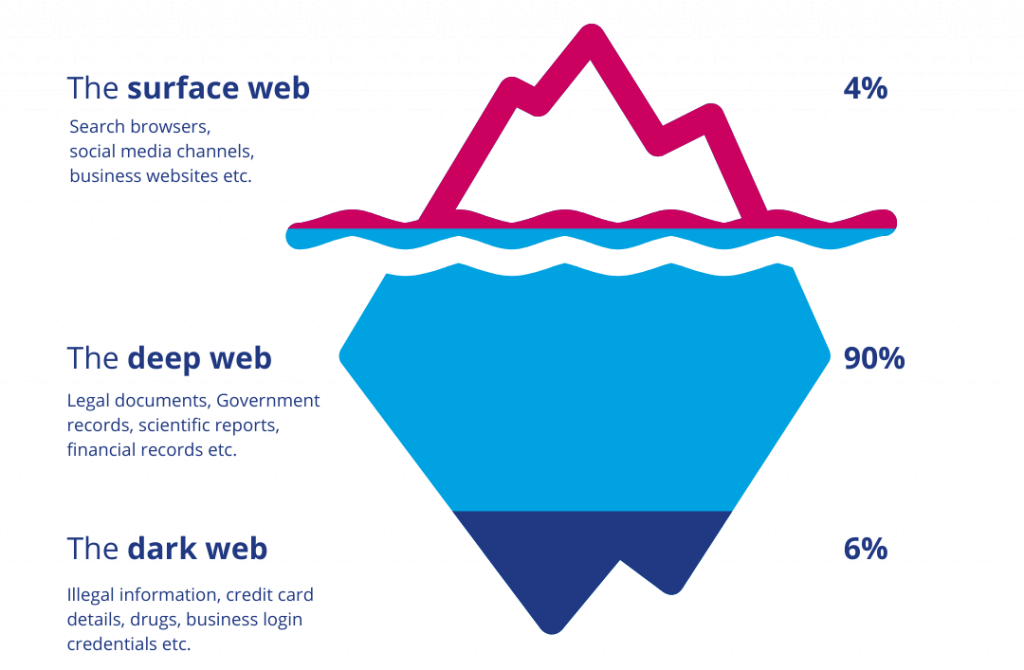
They have lots of similarities, but they are not the same.

The deep web is where you will find all the non-indexed web pages. If you type something into Google, the results you see are the pages on the ‘surface web’. A non-indexed web page would not appear in the search results because it is invisible to Google’s crawlers.
You can access some of these pages using an exact URL, but others will require login credentials to access, or through a direct link via the dark web. For example, your personal Netflix page (once logged in) is part of the deep web.
This may sound dodgy, but this part of the internet is actually home to a lot of sites that you are already familiar with, such as Netflix, Amazon pages, medical records, banking information, government records etc.
The dark web is actually part of the deep web, making it inaccessible to a normal user unless you know exactly where to go. However, the dark web is home to a lot of illegal activity.
The dark web can only be accessed using encrypted networks. The most popular way is using Tor, which stands for The Onion Router. Using the Tor network you can use the Tor Browser, which uses encryption and directs traffic through multiple servers to keep the searcher anonymous. You may be wondering why it’s called The Onion Router? This is due to the many layers inside an onion that represent the layers of encryption within the network.
People often mistake the two, as they have similarities, but they are actually very different. The deep web is purely the non-indexed pages, any pages that require you to log in are most likely on the deep web. Your logged in Facebook account? The deep web. Your logged in Amazon account? The deep web.
In contrast, the dark web is home to a load of unpublished and extremely secure pages that require encrypted networks to enter. Anything you do on the dark web is kept completely anonymous.